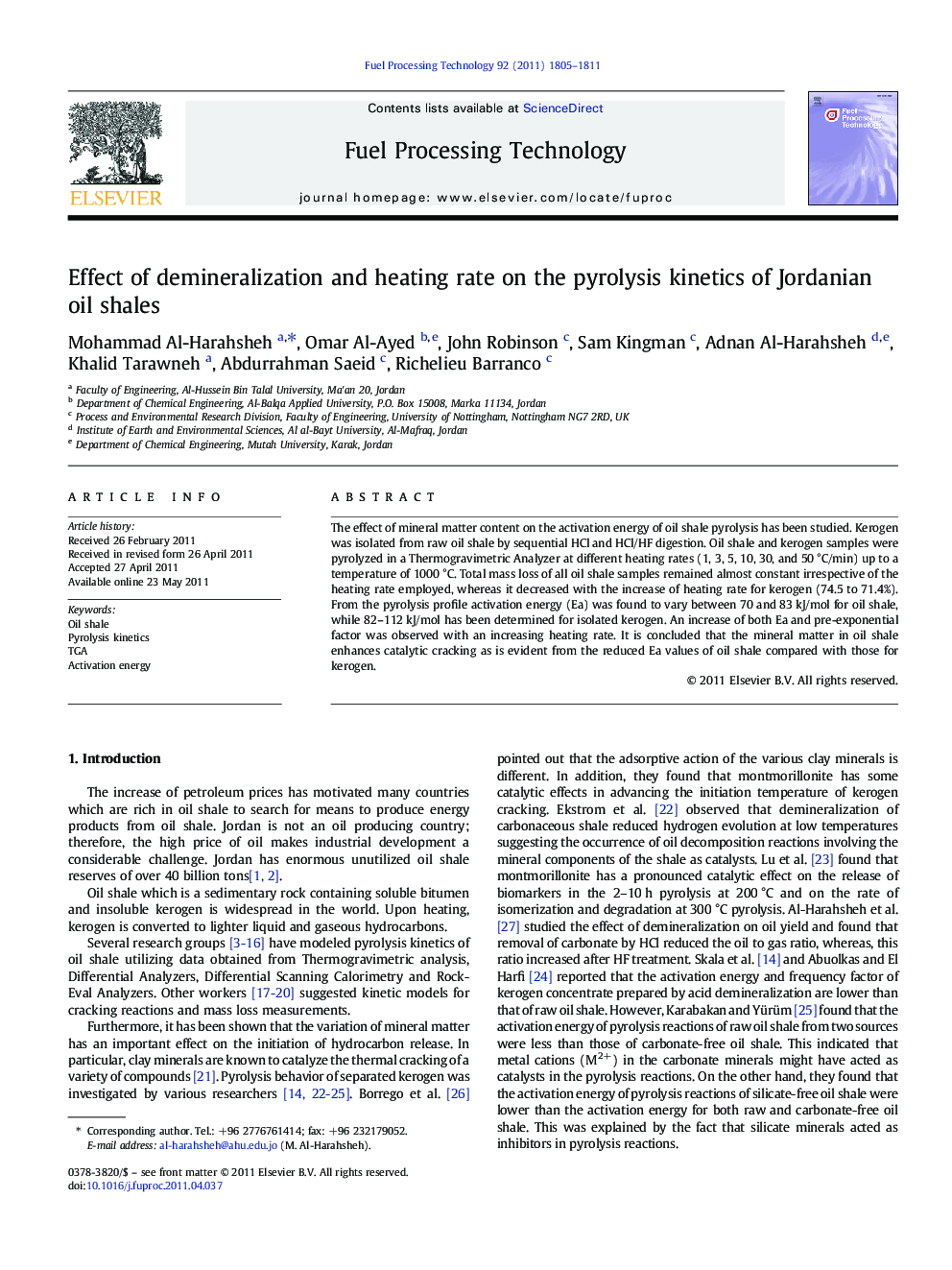| Article ID | Journal | Published Year | Pages | File Type |
|---|---|---|---|---|
| 210726 | Fuel Processing Technology | 2011 | 7 Pages |
The effect of mineral matter content on the activation energy of oil shale pyrolysis has been studied. Kerogen was isolated from raw oil shale by sequential HCl and HCl/HF digestion. Oil shale and kerogen samples were pyrolyzed in a Thermogravimetric Analyzer at different heating rates (1, 3, 5, 10, 30, and 50 °C/min) up to a temperature of 1000 °C. Total mass loss of all oil shale samples remained almost constant irrespective of the heating rate employed, whereas it decreased with the increase of heating rate for kerogen (74.5 to 71.4%). From the pyrolysis profile activation energy (Ea) was found to vary between 70 and 83 kJ/mol for oil shale, while 82–112 kJ/mol has been determined for isolated kerogen. An increase of both Ea and pre-exponential factor was observed with an increasing heating rate. It is concluded that the mineral matter in oil shale enhances catalytic cracking as is evident from the reduced Ea values of oil shale compared with those for kerogen.
Research highlights► Mineral content of oil shale plays a vital role in hydrocarbon evolution and pyrolysis reactions. ► There is a shift in reaction T corresponding with the maximum rate loss with increasing heating rate. ► Ea and pre-exponential factor are found to increase with the increase of heating rate. ► Ea values are found to be 75 and 95 kJ/mol for oil shale and isolated kerogen pyrolysis, respectively. ► This could be due to the catalytic effect of clay minerals present in oil shale.
